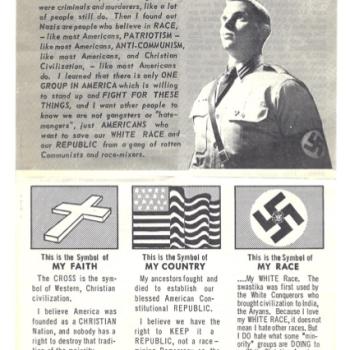Once upon a time in the City of Brotherly Love, a Lutheran minister, led by faith in God’s providence, threw his relentless energies into public health.
Pastor of the largest Lutheran parish in late eighteenth-century North America, Heinrich Helmuth gave himself to the care of the sick in his ambit. Helmuth excoriated those who confronted the public health crisis by prioritizing their own self-preservation rather than helping prevent and alleviate the suffering of others. The pastor attributed the epidemic to “social breakdown.” And, in the words of historian Philippa Koch, “Helmuth’s diagnosis came with a straightforward treatment: take care of your neighbor.”
Philadlephia’s yellow fever epidemic of 1793, a familiar episode in a turbulent decade of the early national period, gets fresh treatment in Koch’s The Course of God’s Providence: Religion, Health, and the Body in Early America. The book investigates eighteenth-century Americans’ belief in God’s providence, especially relating to health, in an era sometimes flattered for its triumphs of reason over faith. Her writing has uncanny timing. Americans today who believe in God’s providenc may have wondered how to apply this faith during the pandemic.
Koch’s chapter on yellow fever is particularly relevant. The episode resonates with some current troubles in a few ways. Fear around the disease targeted immigrants who were presumed to have brought it. Those who could get away, the wealthy and powerful, fled the city while the sickness raged. The sickness cut with disproportionate effect across racial lines, since a large free black community, including prominent ministers Richard Allen and Absalom Jones, made Philadelphia home.
Benevolence of both black and white Philadelphians played important roles in aiding those affected by illness. Jones and Allen helped develop the Free African Society and the new African Church, and responded to disease outbreaks by recruiting nurses and burying the dead. Scientific misunderstanding reinforced white citizens’ presupposition that Africans could not contract the disease. Black nurses who served both their own community and white patients were attacked for the fees they charged. White Philadelphians aided the needy by organizing the Committee to Attend to and Alleviate the Sufferings of the Afflicted with the Malignant Fever, though a member, printer Matthew Carey, maligned the work of black nurses.
Philadelphians involved in epidemic-season good works described their projects as “benevolence.” Benevolence borrowed from commonsense philosophy the claim to an inborn sense of sympathy, in ways that, Koch insists, the “new philosophical language of human compassion as a natural instinct” was still compatible with belief in providence. God had provided the desire to do good. Doers of benevolent deeds recognized that such actions offered a kind of pleasure. It could feel good to do good. Critics who preferred good deeds done solely from obedience or imitation of God worried over the self-interest likely embedded in benevolence. Doing good to feel good about oneself could be a problem, as could doing good to burnish one’s reputation or social status.
Koch concedes the ambivalence of benevolence. She recognizes its imperfect fit with earlier responses to providence. But benevolence had benefits. Older ideas of God’s creation could be blended with newer pleas to reason and sentiment. Faithful servants of the Lord could serve others because God had implanted in them capacity for pleasure in service–a convergence Koch reads in Philadelphians’ “shared sense of duty and conception of providence.”
Several written accounts of the yellow fever illustrate Koch’s premise, but Helmuth’s experience is most illuminating. The minister was formed by Pietist institutions in Halle teaching at the orphan house of the Francke Foundation. In Philadelphia he organized a benevolent poor-relief society. Testifying to the epidemic’s horrors and the Christian obligation to put others ahead of themselves, Helmuth wrote A Short Account of the Yellow Fever. The pastor marveled at some kindnesses he observed but also at the “unfriendly conduct, sometimes even inhuman brutality” of Philadelphians whose focus on self led them to abandon the suffering. Helmuth preached that “God wanted sinful men and women not only to convert but also to help others,” Koch explains. The pastor urged hearers to “shake yourselves up and place yourselves in the fissure.” The way the author shows the pastor practice his own preaching is worth quoting at length:
By ‘fissure,’ Helmuth meant the chaos, the social disintegration, and the lack of basic human care that he witnessed daily in the city under the epidemic. He told his community not to flee or hide but rather to dig into the misery, despite the terror and inhumanity, which he made no attempt to elide…..Disturbed by the thought of people dying alone, Helmuth confided to his journal, ‘My God! What is becoming of us miserable worms!’ His published account of the epidemic expressed the conviction that many people died from solitude. Without the attention of human compassion,’the fear of death overpowered many and actually killed them.’ To step into the fissure, then, meant to cross that boundary of fear and to respond with compassion to suffering.
A hymn sung by Helmuth’s benevolent society praised easing the pain of the poor as the “sweetest duty” of a Christian, Koch reports. In a book rich with evidence of earlier American belief in providence, Koch also offers Christian responses to public-health crises serviceable for our time.













